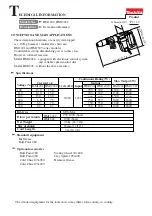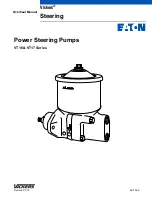
15
2.6 Installing
External
Temperature Compensation (Option 11W/11Y)
The natural voltage of a battery changes as a function of temperature change. As the battery temperature
rises, the effective voltage of the battery decreases. Without Temperature Compensation, the battery charger
will always produce a set constant output voltage. As the battery temperature increases, this constant voltage
will then induce a higher output current from the charger. This higher current can result in overcharging the
battery, which in turn can result in damage to the batteries.
Temperature Compensation combats this overcharging by adjusting the charger’s output voltage based on the
temperature read by the temperature probe. In order to increase the accuracy of the temperature
compensation the external probe can be used to measure the temperature of the battery.
Option 11W includes the compensation circuit and a 24 foot long temperature probe. Option 11Y includes the
compensation circuit and a 100 foot long temperature probe. With either option approximately two feet of the
probe is taken inside the charger enclosure.
External Probe Connection Procedure
1.
Before making any connections to the
TPSD ensure that the AC Power is off at
the main breaker box and that both of the
unit’s breakers are off. Verify that no
voltage is present by using a voltmeter at
all input and output terminals.
2.
Locate the terminal strip TS-6 inside the
charger.
3.
As illustrated in Figure 8, connect wire
marked F to terminal 1 and wire marked
G to terminal 2.
4.
Connect the black lead of the probe to the
other end of terminal 1, and the red lead
to the other end of terminal 2.
5.
Place the external probe in a desired location
(it is recommended that the battery manufacturer be
consulted for placement of the probe).
Figure 11 - Temperature Compensation Connection
(External and Internal)
















































